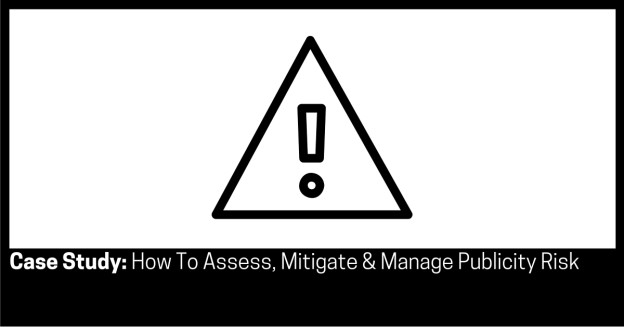Approximate read time: 4 minutes
You could die today…
But the probability is you won’t.
Why?
Whether you realise it or not, you are constantly doing risk assessments as you go about your daily routine.
A risk assessment is the process of evaluating the potential risks that could be involved with an activity.
It’s balancing the likelihood of results and the consequences of that result.
And you do it without thinking.
Let’s discuss how this looks for a publicity campaign so that it results in positive publicity…
In this case study, I’ll show you an example of how assess publicity risk.
The situation was the client had a product that was networking style event.
The networking event was similar to a match-making speed-dating format for professionals.
They were looking for interesting ways to get publicity for this unique take on that format and reach potential participants.
At the time the Tinder mobile app was becoming popular.
Tinder is an appearance based matchmaking mobile app which uses GPS technology so users can set a specific radius and have the option to match with anyone that is within that distance and its core demographic is 18-34 years.
My publicity idea was to create a response that encourages people to take screenshots of the clients Tinder profile and share it on social media with the aim of the main stream media picking up the story.
This would demonstrate the client was astute with connecting with younger demographics who may feel marginalised by the industry the client operated in, create wide spread awareness of potential participants who are hard to target as a demographic outside of personal networks, connections and referrals.
I suggested that the client create a Tinder profile with a stereotypical look of a participant combined with branding and marketing messages.
The idea was that when there was a “match” within the Tinder app, the client would engage with those matches proactively communicating their marketing message for the event.
Distribution was to be done through the localised app were conversations would be shared on the clients blog & social media with names and images blocked out with the aim that tech, marketing blogs and local print would find and pick up the story.
On my instruction, the client did a risk assessment and decided not to run the publicity campaign because the potential likelihood of causing offence to potential participants, the difficultly in winning over other departments of the business and the potential consequence of jeopardising their legacy brand.
Interestingly, brands such as McDonalds and SXSW are now doing this on Tinder.
The lesson here is that no matter how good the publicity opportunity looks (in this case a great match between message and medium), it’s better to air on the side of caution, unless you are willing accept the risks of the publicity communication going wrong.
And that opens up a whole other rabbit hole.
That’s it.
An example of how to assess the risk of a publicity campaign.
The specifics are not important, so much as the principles behind them.
No need to copy it exactly, just see if you can use it as inspiration for something unique to your brand.
Risk is all around us.
How you manage that risk is what matters.
Have a plan.
You have no excuse.
You can get 21 printed lead generating Process Maps for free, here.
And if you’re serious about marketing and selling more, the logical next step is to contact me to help you do it yourself, have me do it with you, or have it all done for you.
This may be the momentum you need to get great marketing and sales results.
Or do you simply want more like this?
Join below to be notified immediately about new content and more. No annoying daily emails and no spam – just good content when it’s posted.

